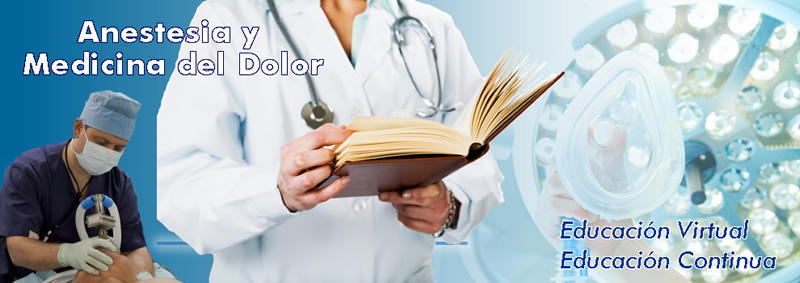http://www.clinicademano.com.mx/academia/musculos-anomalos-del-antebrazo-y-su-relevancia-clinica/
Anomalous Forearm Muscles and Their Clinical Relevance.
Fuente
Este artículo es publicado originalmente en:
https://www.ncbi.nlm.nih.gov/pubmed/29602650
https://www.jhandsurg.org/article/S0363-5023(17)30571-3/fulltext
De:
Andring N1, Kennedy SA1, Iannuzzi NP2.
J Hand Surg Am. 2018 May;43(5):455-463. doi: 10.1016/j.jhsa.2018.02.028. Epub 2018 Mar 27.
Todos los derechos reservados para:
© 2018 by the American Society for Surgery of the Hand. All rights reserved.
Abstract
Despite their relatively low prevalence in the population, anomalous muscles of the forearm may be encountered by nearly all hand and wrist surgeons over the course of their careers. We discuss 6 of the more common anomalous muscles encountered by hand surgeons: the aberrant palmaris longus, anconeus epitrochlearis, palmaris profundus, flexor carpi radialis brevis, accessory head of the flexor pollicis longus, and the anomalous radial wrist extensors. We describe the epidemiology, anatomy, presentation, diagnosis, and treatment of patients presenting with an anomalous muscle. Each muscle often has multiple variations or subtypes. The presence of most anomalous muscles is difficult to diagnose based on patient history and examination alone, given that symptoms may overlap with more common pathologies. Definitive diagnosis typically requires soft tissue imaging or surgical exploration. When an anomalous muscle is present and symptomatic, it often requires surgical excision for symptom resolution.
KEYWORDS:
Anatomy; forearm; hand; muscle; variant
Resumen
A pesar de su prevalencia relativamente baja en la población, casi todos los cirujanos de manos y muñecas pueden encontrar músculos anómalos del antebrazo en el transcurso de sus carreras. Discutimos 6 de los músculos anómalos más comunes encontrados por cirujanos de mano: el aberrante palmar largo, anconeus epitroclear, palmar profundo, flexor radial corto del carpo, cabeza accesoria del flexor largo del pulgar, y los extensores anómalos de la muñeca radial. Describimos la epidemiología, la anatomía, la presentación, el diagnóstico y el tratamiento de pacientes que presentan un músculo anómalo. Cada músculo a menudo tiene múltiples variaciones o subtipos. La presencia de la mayoría de los músculos anómalos es difícil de diagnosticar según la historia del paciente y el examen solo, dado que los síntomas pueden solaparse con las patologías más comunes. El diagnóstico definitivo generalmente requiere imágenes de tejidos blandos o exploración quirúrgica. Cuando un músculo anómalo está presente y es sintomático, a menudo requiere una escisión quirúrgica para la resolución de los síntomas.
PALABRAS CLAVE:
Anatomía; antebrazo; mano; músculo; variante
PMID: 29602650 DOI: 10.1016/j.jhsa.2018.02.028
Anomalous Forearm Muscles and Their Clinical Relevance.
Fuente
Este artículo es publicado originalmente en:
https://www.ncbi.nlm.nih.gov/pubmed/29602650
https://www.jhandsurg.org/article/S0363-5023(17)30571-3/fulltext
De:
Andring N1, Kennedy SA1, Iannuzzi NP2.
J Hand Surg Am. 2018 May;43(5):455-463. doi: 10.1016/j.jhsa.2018.02.028. Epub 2018 Mar 27.
Todos los derechos reservados para:
© 2018 by the American Society for Surgery of the Hand. All rights reserved.
Abstract
Despite their relatively low prevalence in the population, anomalous muscles of the forearm may be encountered by nearly all hand and wrist surgeons over the course of their careers. We discuss 6 of the more common anomalous muscles encountered by hand surgeons: the aberrant palmaris longus, anconeus epitrochlearis, palmaris profundus, flexor carpi radialis brevis, accessory head of the flexor pollicis longus, and the anomalous radial wrist extensors. We describe the epidemiology, anatomy, presentation, diagnosis, and treatment of patients presenting with an anomalous muscle. Each muscle often has multiple variations or subtypes. The presence of most anomalous muscles is difficult to diagnose based on patient history and examination alone, given that symptoms may overlap with more common pathologies. Definitive diagnosis typically requires soft tissue imaging or surgical exploration. When an anomalous muscle is present and symptomatic, it often requires surgical excision for symptom resolution.
KEYWORDS:
Anatomy; forearm; hand; muscle; variant
Resumen
A pesar de su prevalencia relativamente baja en la población, casi todos los cirujanos de manos y muñecas pueden encontrar músculos anómalos del antebrazo en el transcurso de sus carreras. Discutimos 6 de los músculos anómalos más comunes encontrados por cirujanos de mano: el aberrante palmar largo, anconeus epitroclear, palmar profundo, flexor radial corto del carpo, cabeza accesoria del flexor largo del pulgar, y los extensores anómalos de la muñeca radial. Describimos la epidemiología, la anatomía, la presentación, el diagnóstico y el tratamiento de pacientes que presentan un músculo anómalo. Cada músculo a menudo tiene múltiples variaciones o subtipos. La presencia de la mayoría de los músculos anómalos es difícil de diagnosticar según la historia del paciente y el examen solo, dado que los síntomas pueden solaparse con las patologías más comunes. El diagnóstico definitivo generalmente requiere imágenes de tejidos blandos o exploración quirúrgica. Cuando un músculo anómalo está presente y es sintomático, a menudo requiere una escisión quirúrgica para la resolución de los síntomas.
PALABRAS CLAVE:
Anatomía; antebrazo; mano; músculo; variante
PMID: 29602650 DOI: 10.1016/j.jhsa.2018.02.028






